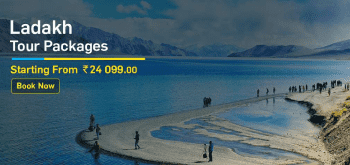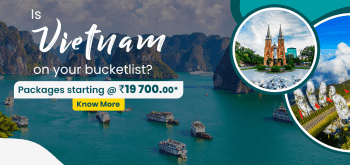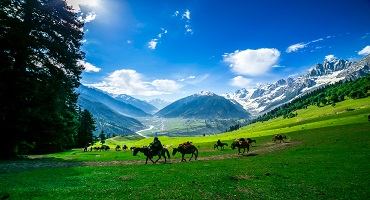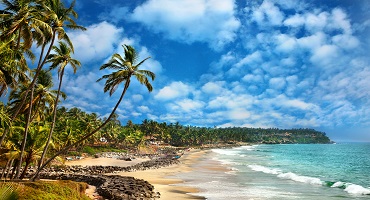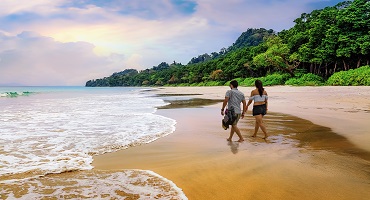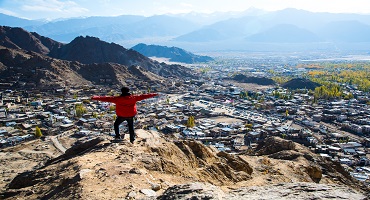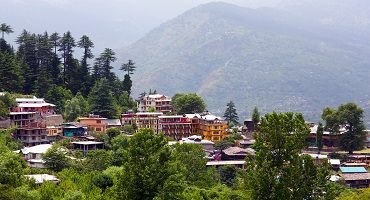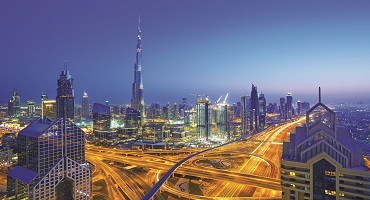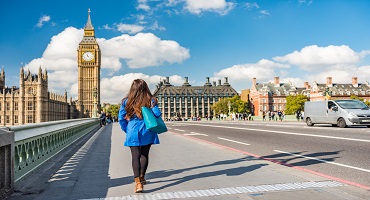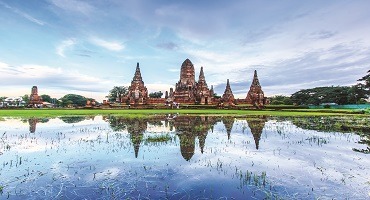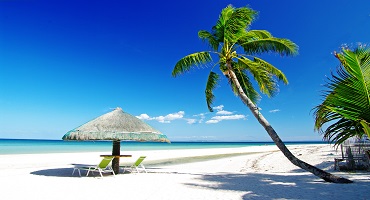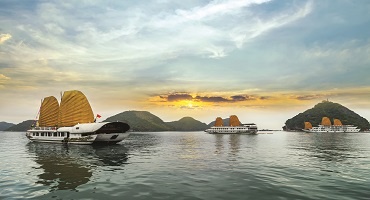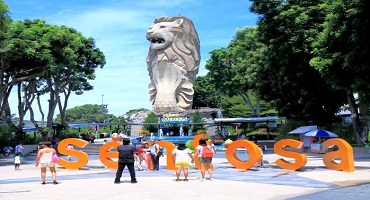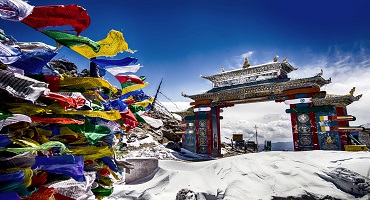Vadodara: A City for Kings
Not sure if it is Vadodara or Baroda? Well, there is an easy explanation. Baroda is the anglicised name for Vadodara. Interestingly, the city gets its name from the Sanskrit word, “vatodor”, which means “in the heart of the Banyan trees”.
The city rose to international fame, when the Moon of Baroda hit the global market. Your eyes would glisten at the sight of the 24.04-carat pear-shaped, yellow diamond. This precious stone would rest proudly around the necklines of royalty including the Queen of Hollywood, Marilyn Monroe.
| Vadodara: A Quick View of the state |
| State |
Gujarat |
| Official Language |
Gujarati, Hindi, and Urdu |
| Dial Code |
265 |
| Population |
2.39552 Million (2018) |
| Currency |
Indian Rupee (INR) |
| Time Zone |
UTC+05:30 (IST) |
| Area |
148.95 sq. km |
Highlights: A Place of Palaces
The Royal life
One of the iconic structures that defines the city is the Lakshmi Vilas Palace. It captures the essence of Vadodara’s royalty.
Built in 1890, the palace is the original design of Maharaja Sayajirao Gaekwad III and Major Charles Mant, the architect. It was built in the Indo-Saracenic style and is four times the size of Buckingham Palace.
Besides the stunning architectural ornaments, the palace was ahead of its times. One of its iconic amenities was the installation of the elevators.
The palace’s Darbar Hall, till today, holds music and cultural events on rare occasions. The chandeliers suspended from the intricately decorated ceiling illuminate the details on the mosaic walls and Venetian-style floor. The Belgium-stained glass windows are also the pride of this hall. The royal family still resides at the palace, as well as in the hearts of the locals.
In the vicinity are other palaces that you must visit, which will transport you to the golden days of the Maratha Gaekwad rule.
Makarpura Palace, another symbol of Maratha Gaekwad’s legacy. It was constructed in an Italian style and resembled a European manor. Today, this palace is a training school for the Indian Air Force.
Motibaug Palace, a small villa that served as a guesthouse for architects who built the Lakshmi Vilas Palace. It was these phenomenal minds that are inspiring architects, today.
Indumati Palace, the best place to acquaint yourself with the history of the Gaekwad family. It holds rare pictures of the royal family and important historical books.
A piece of history
Maharaja Fateh Singh Museum was once a school for the royals. Today, it is a place to appreciate the remarkable art collection of the royals. Works of Indian and European artists stand alongside portraits of the royal family. You don’t need to be a connoisseur of art to be wowed by the depth of artistry.
The museum displays art works of prominent European Renaissance artists such as Raphael, Titian, Murillo and Rembrandt. And the portraits are by the renowned 19th century portraitist, Raja Ravi Verma. His intensity of colour and subjects’ expressions evoke vivid storytelling.
The treasures do not end here. The marble and bronze sculptures, Chinese and Japanese porcelain items, and other priceless artefacts are equally beckoning.
An ecosystem of entertainment
Sayaji Baug tops the traveller’s list. Not only does it boast the world’s biggest floral clock, in its premises are also located the Baroda Museum & Picture Gallery, the Sardar Patel Planetarium, and the Sayaji Baug Zoo. The forward-thinking Maharaja Sayajirao III built it in 1879, so do explore it at leisure to make the most of the experience.
Calming Experience
Do what most locals do in the evening, visit the Sursagar Lake. Enjoy a quiet boat ride or on cooler days, stroll around it. If you wait back on a full moon night, the lake sparkles like tiny diamonds.
Did you know, back in the 18th century, the lake was renovated with stonework. Interestingly, the lake has underground passages. These come in handy when the lake overflows in the monsoons, as the excess water is diverted to the River Vishwamitri.
Interesting facts
- Vadodara has the oldest and largest Vocal Music Department in India, MSU’s Faculty of Performing Arts.
- The first statue of Chhatrapati Shivaji in the world was owned by the Gaekwad family. It was revealed to the public on 8th March 1934 at Sayajibaug.
- With the change in dynasties, the city was renamed several times. Before it was called Vadodara, it was known as Chandanvati, Ankottaka, Vatpatrak, Viravati, Virakshetra, and Brodera.
- To all the cricket fanatics, Vadodara is home to the oldest cricket ground in Asia - the Moti Baug.
- Golf is a rich man’s sport. Hence, it is befitting that the Gaekwad Baroda Golf Club is surrounded by a Palace - the Laxmi Villas Palace Estate.
- Major Charles Mant, the architect of Laxmi Vilas Palace committed suicide before the project was complete in the fear that he had his calculations wrong and that the palace would fall down.
Location: River-centric city
The city of Vadodara sprung from a small settlement on the banks of the River Vishwamitri, which was once the abode of majestic banyan trees. Today, it is the state’s third largest city, rejuvenated by several rivers. Besides, Vishwamitri, which splits the city into western and eastern regions, the other rivers are Mahi, Jambuva, Narmada, and Dhadhar. These rivers fertilise the area, making it conducive for farming. Till today, agriculture is a prominent occupation in the district.
Click here to view Vadodara on Google Map
Best time to visit: Winters, of course
On arrival, you may be greeted by a burst of Vadodara’s dry weather. The crisp air may make your skin feel flaky. This is the weather most months of the year, but it is something a moisturiser can fix. The city has three seasons – summer, monsoon, and winter.
In summer, it feels like a furnace. From March to May, the dry, hot breeze hits you, forcing you indoors. It is a good decision because the temperature soars to 40 degrees Celsius.
Monsoon season soon follows from June till September. The average rainfall is 37 inches. But there are moments when the city struggles with heavy downpours. This is when the rivers overflow onto the banks. The rains are typically accompanied by humidity. So, it is not the best time to drop by.
From November, the city cools down to 15 degrees Celsius. This pleasant and enjoyable weather lasts till February, making it the ideal months to visit Vadodara and explore its extensive history and impressive sights.
How to get to Vadodara: Easy Access
By Road: Vadodara is easily accessible from the neighbouring states of Maharashtra, Rajasthan, and Madhya Pradesh. If you prefer to drive down to the city, make your way to National Highway 8. For a carefree journey, book a seat on one of the many government run or privately-owned buses.
By Rail: The Indian Railways are well connected and offer economical fares. If it is your favourite transport, then grab a seat, and alight at Vadodara Junction railway station. This is the main station that serves trains from Mumbai, Delhi and Ahmedabad.
By Air: Hop on a flight for the quickest way to reach the city. Vadodara Airport serves domestic flights that arrive from various major cities as well as from cities in Gujarat.
History: From empires to education
From the time the first inhabitants made the river bank their home in 1000 B.C, the city has grown exponentially.
Vadodara’s history is full of conquests, achievements, and developments. The influential rulers that coloured the city’s heritage are the Chalukya Dynasty, Gupta Empire, Solanki Rajputs, Sultans of Delhi, and Maratha Gaekwads.
However, the last powerful sovereign, the Maratha Gaekwads truly upgraded the city. The Golden Period of their reign was from 1875 onwards. This is when the ruler, Maharaja Sayajirao III completely changed the face of Vadodara.
He envisioned the city to be an educational, commercial, and industrial centre. He was responsible for making primary education compulsory, built a university for further studies, and established a library.
Sayajirao also sowed the first seeds of industrialisation with the promotion and production of textile and tiles.
To showcase his massive and invaluable art collection and artefacts, he set up a museum, which is truly outstanding and worth visiting.
With these accomplishments in tow, the citizens would also call Vadodara, Sayaji Nagari or Sayaji's City. Unfortunately, the Gaekwads’ reign ended with the Indian Independence.


